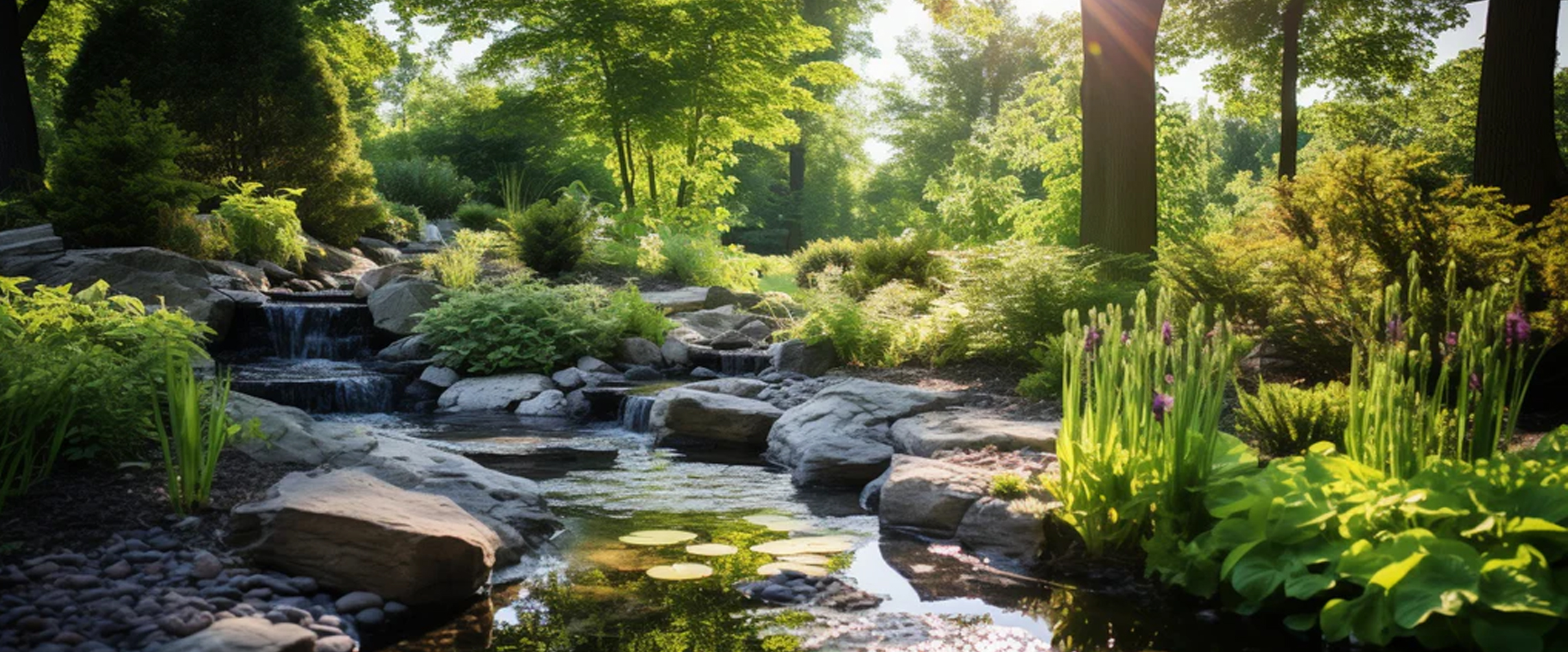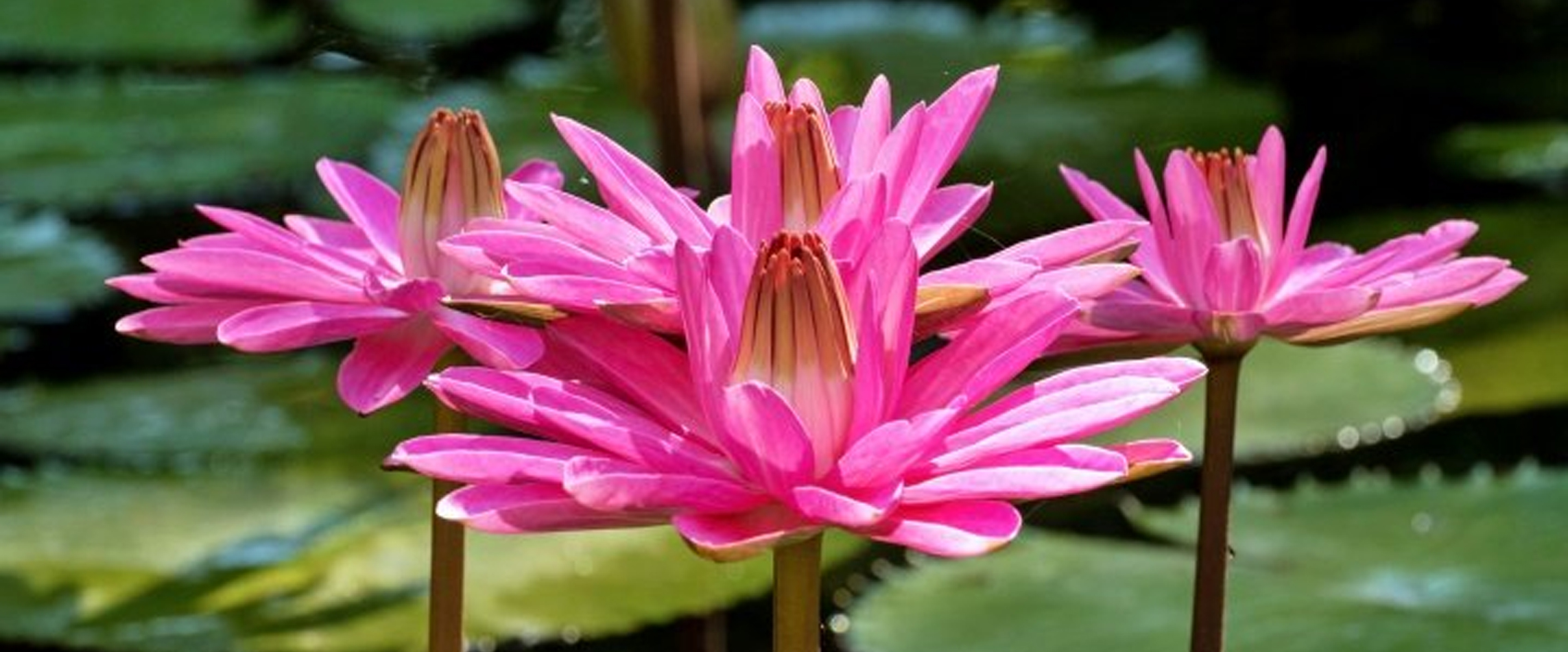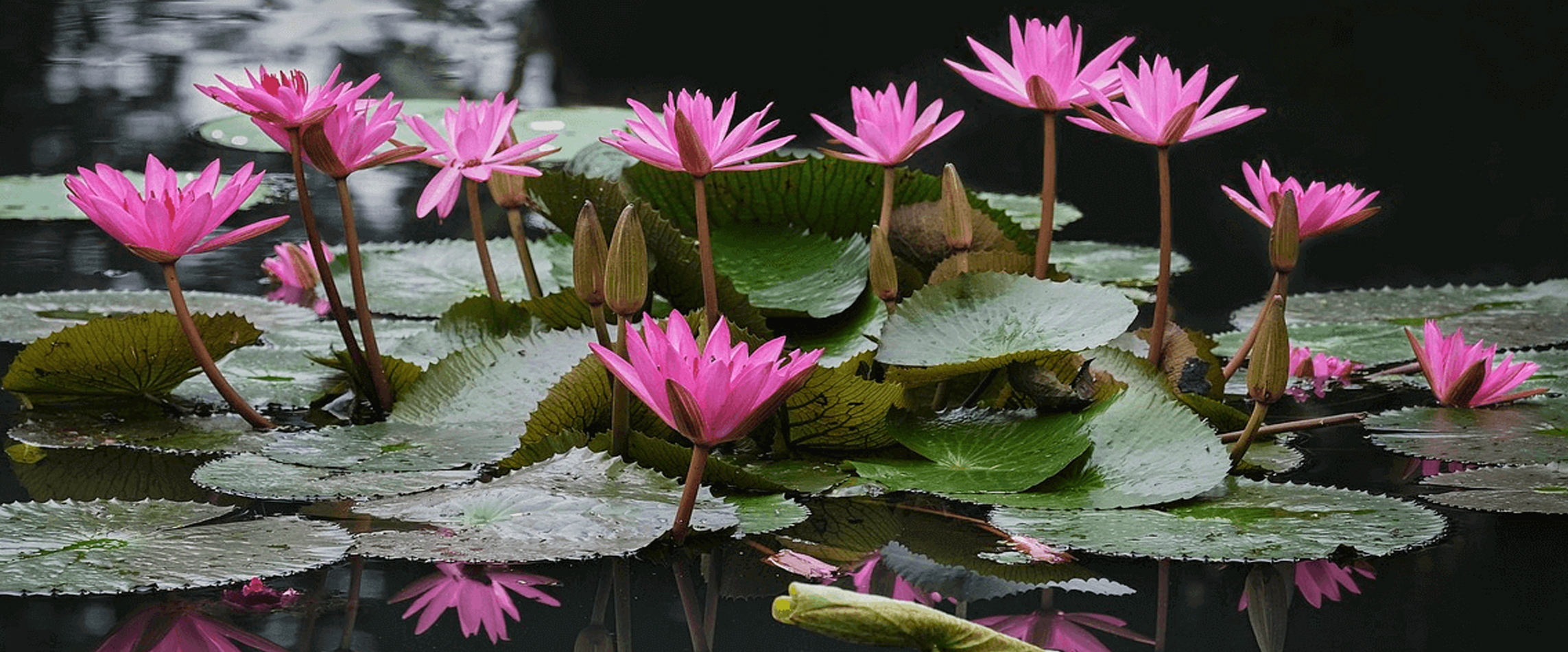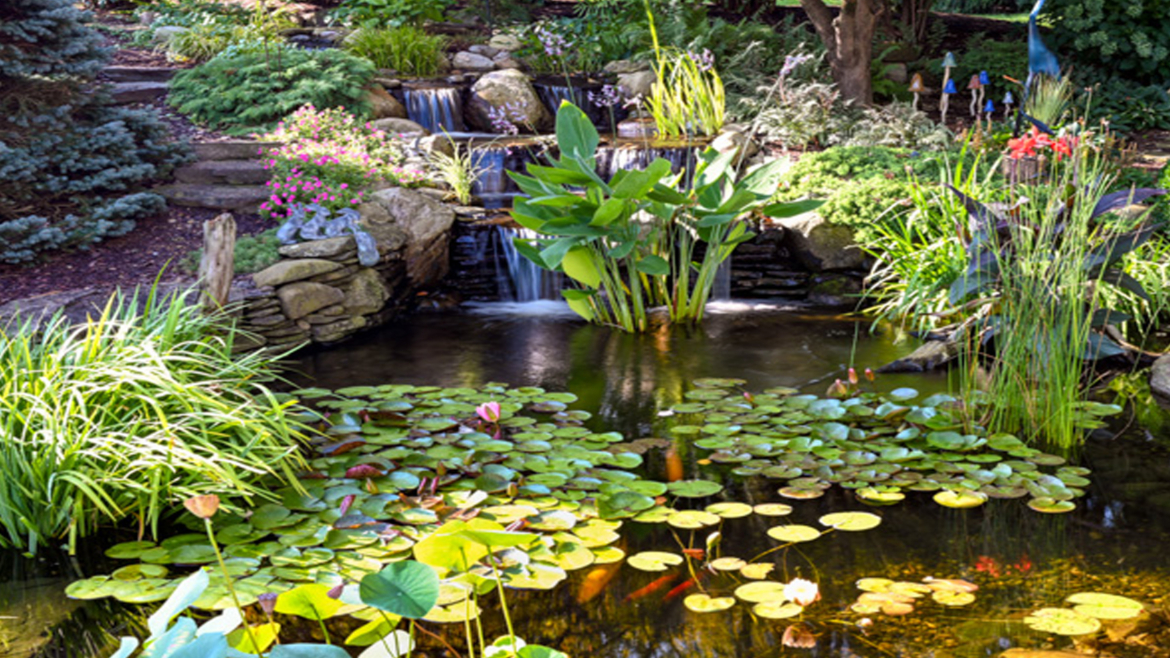(Podcast Episode)
The Best Pond Plants for Clear Water Natural Filtration Solutions
Many garden lovers dream of building a beautiful, clean, and transparent pond. The key is choosing the right plants for the job, as they serve as a natural filtration.
These plants beautify the water garden and help form the green cover around the pond, maintaining water clarity and health.
In this blog, we will discuss the best water plants for water with clear water, their work efficiency for pond water filtration, and how to maintain and choose the plants.
We will also describe the significance of the oxygenating pond plants, the floating pond plants, the marginal plants, and the water lilies.

The Importance of Natural Filtration Solutions for Pond Water Clarity
Natural filtration is an important concept that uses plants that offer filtration benefits to improve the water quality in ponds.
Some of these plants include water lilies, water hyacinths, and duckweeds; these can filter excess nutrients from the water, especially nitrogen and phosphates, which are the primary causes of algae growth.
As such, these pond plants help maintain water quality by preventing algae development, as they deprive the water of the nutrients needed for algae to grow.
Also, the roots of these plants form substrates that other helpful bacteria can attach themselves to, as well as provide surfaces for breaking down more organic matter and pollutants.
All in all, using natural filtration solutions in the management of ponds contributes positively towards improving the aquatic ecosystem.
The Role of Pond Plants in Water Filtration
Pond plants are nature’s filtration system. They help maintain water clarity by absorbing excess nutrients, which would otherwise contribute to algae growth.
Algae can cloud the water, making it murky and less appealing. By selecting the right combination of aquatic plants, one can achieve a balanced ecosystem where plants, fish, and microorganisms coexist harmoniously.
Types of Pond Plants
Pond plants can be broadly categorized into four main types: oxygenating pond plants, floating pond plants, marginal plants, and water lilies.
Each type plays a unique role in the pond ecosystem and contributes to water clarity differently.
Oxygenating Pond Plants
Oxygenating pond plants are essential for maintaining clear water. These plants release oxygen into the water during photosynthesis, which helps to sustain fish and other aquatic life.
They also absorb carbon dioxide and other dissolved nutrients, which can otherwise promote algae growth.
Some popular oxygenating pond plants include:
Hornwort: Hornwort is a submerged plant that grows quickly. It helps to oxygenate the water and provides excellent cover for fish and other aquatic animals.
Anacharis: Anacharis is another submerged plant that effectively oxygenates the water and reduces algae growth. It is easy to care for and can survive in various water conditions.
Vallisneria: Vallisneria, also known as eelgrass, is a fast-growing plant that helps to oxygenate the water and provide shelter for fish.
Floating Pond Plants
Floating pond plants are unique because they float on the water’s surface, providing shade and reducing the amount of sunlight penetrating the water.
This helps to prevent and stop the growth of algae. Some common floating pond plants include:
Water Hyacinth: Water hyacinth is a fast-growing plant with attractive purple flowers. It is highly effective at absorbing nutrients from the water and preventing algae growth.
Duckweed: Duckweed is a tiny, free-floating plant that forms a dense mat on the water’s surface. It is excellent at reducing nutrient levels and providing shade for the pond.
Water Lettuce: Water lettuce has rosette-shaped leaves that float on the water’s surface. It helps to reduce sunlight penetration and absorbs excess nutrients.
Marginal Plants
These plants grow along the edges of the ponds, with their roots submerged in water and foliage above the surface.
These plants help to stabilize the pond’s edges, prevent erosion, and absorb excess nutrients. Some popular marginal plants include:
Cattails: Cattails are tall, grass-like plants that thrive in shallow water. They help to filter the water and provide habitat for wildlife.
Pickerelweed: Pickerelweed is a hardy plant with attractive blue flowers. It grows well in shallow water, helps to absorb nutrients, and provides cover for fish.
Iris: The yellow flag iris is a beautiful plant that grows well in wet conditions. It helps to stabilize the pond’s edges and absorb excess nutrients.
Water Lilies
Water lilies are the most famous pond plants due to their stunning flowers and large, floating leaves.
They provide shade, which helps to reduce algae growth, and their roots absorb nutrients from the water. Some well-known water lilies include:
Nymphaea ‘Attraction’: This variety produces large, red flowers that bloom throughout the summer. It is hardy and easy to care for.
Nymphaea ‘Perry’s Baby Red’: This compact water lily produces vibrant red flowers and is ideal for smaller ponds.
Nymphaea ‘Colorado’: This variety has striking peach-colored flowers and is known for its long blooming season.

Pond Plant Care
Proper pond plant care is essential to ensure the health and effectiveness of the aquatic plants.
Here are some tips for maintaining the pond plants:
Planting: Use appropriate planting containers or baskets to contain the roots of the pond plants. This helps to prevent them from spreading uncontrollably.
Pruning: Regularly trim dead or decaying foliage to prevent it from decomposing in the water and contributing to nutrient levels.
Fertilization: Use aquatic plant fertilizers to provide essential nutrients. Avoid over-fertilizing, as excess nutrients can promote algae growth.
Pest and Disease Control: Monitor the plants for signs of pests and diseases. Common pond plant diseases include fungal infections and aphid infestations. Use appropriate treatments to address these issues.
Aquatic Plant Fertilizers Tips For Fertilizing Aquatic Plants In Ponds
Aquatic fertilizers are specially formulated to provide the necessary nutrients for pond plants without promoting algae growth.
They come in various forms, including tablets, liquid, and granular. When using fertilizers, follow the manufacturer’s instructions carefully to avoid over-fertilization.
Tablet Fertilizers: These are placed near the roots of pond plants and dissolve slowly, providing a steady supply of nutrients. They are ideal for water lilies and other rooted plants.
Liquid Fertilizers: These can be added directly to the water and are absorbed quickly by the plants. They are helpful for fast-growing plants that need a quick nutrient boost.
Granular Fertilizers: These are sprinkled around the base of plants and release nutrients gradually. They are suitable for larger ponds with a variety of plant types.
Using aquatic plant fertilizers promotes healthy growth and enhances the plant’s ability to absorb excess nutrients, thereby improving water clarity and reducing algae growth.
Pond Plant Diseases
How to treat common pond plant diseases? Pond plants can be susceptible to various diseases, including fungal infections, bacterial infections, and pest infestations.
Regular monitoring and immediate treatment are essential to prevent the spread of diseases. Some common treatments include:
Fungal Infections can cause black spots or mold on plant leaves. Treat with fungicides explicitly designed for aquatic plants.
Bacterial Infections: These can lead to rotting roots and stems. To prevent the spread of bacteria, maintain good water quality and remove affected plants.
Pest Infestations: Common pests include aphids, spider mites, and snails. Use insecticides that are safe for aquatic environments or introduce natural predators like ladybugs and fish.
Preventive measures, like maintaining proper water quality, removing dead plant material, and avoiding overcrowding, can also help reduce the risk of diseases.

Pond Plant Selection
How to choose the right plants for your pond? Selecting the best plants for ponds involves considering several factors, including the size, the water depth, and the amount of sunlight the pond receives.
Here are some tips for choosing the right plants:
Pond Size: For small ponds, opt for compact plants like miniature water lilies or dwarf cattails. Larger ponds can accommodate more extensive plantings and larger species.
Water Depth: Different plants thrive at different water depths. Lilies prefer deeper water, while marginal plants like cattails grow best in shallow water.
Sunlight: Most pond plants require full sun to thrive. However, some plants, such as water lettuce and duckweed, can tolerate partial shade.
Water Garden Plants
In addition to the primary categories of pond plants, many other water garden plants can enhance the beauty and functionality of the pond. Some of these include:
Lotus: Known for its large, stunning flowers, the lotus is a popular choice for water gardens. It requires deeper water and plenty of sunlight.
Water Poppy: This plant produces small, yellow flowers and is ideal for small to medium-sized ponds.
Marsh Marigold: Marsh marigold is a hardy plant and it produces bright yellow flowers in the spring. It grows well in shallow water, adding color to the pond’s edges.
Water Hawthorn: Water hawthorn blooms in spring and autumn, offering beautiful white flowers with a vanilla scent. It’s ideal for cooler climates and can thrive in deeper water.
Parrot’s Feather: Parrot’s Feather has feathery, bright green foliage growing above and below the water surface. It fosters an excellent habitat for fish and helps to oxygenate the water.
Arrowhead: Arrowhead plants produce arrow-shaped leaves and small, white flowers. They grow well in shallow water and are effective at nutrient absorption.
Wrapping it Up
Using the right pond plants that filter the water, one can turn the water garden into a beautiful place that is also good to look at.
By incorporating various oxygenating plants, floating plants, marginal plants, and water lilies, one can achieve perfect balance within the pond environment and create clear and healthy water for the pond.
Fertilizing and disease control are the two critical steps in the plant management system that must be followed to care for pond plants properly.
By choosing the right plants for the pond and caring for them, one can have a neat and clean pond that will be a great addition to the surrounding space.

